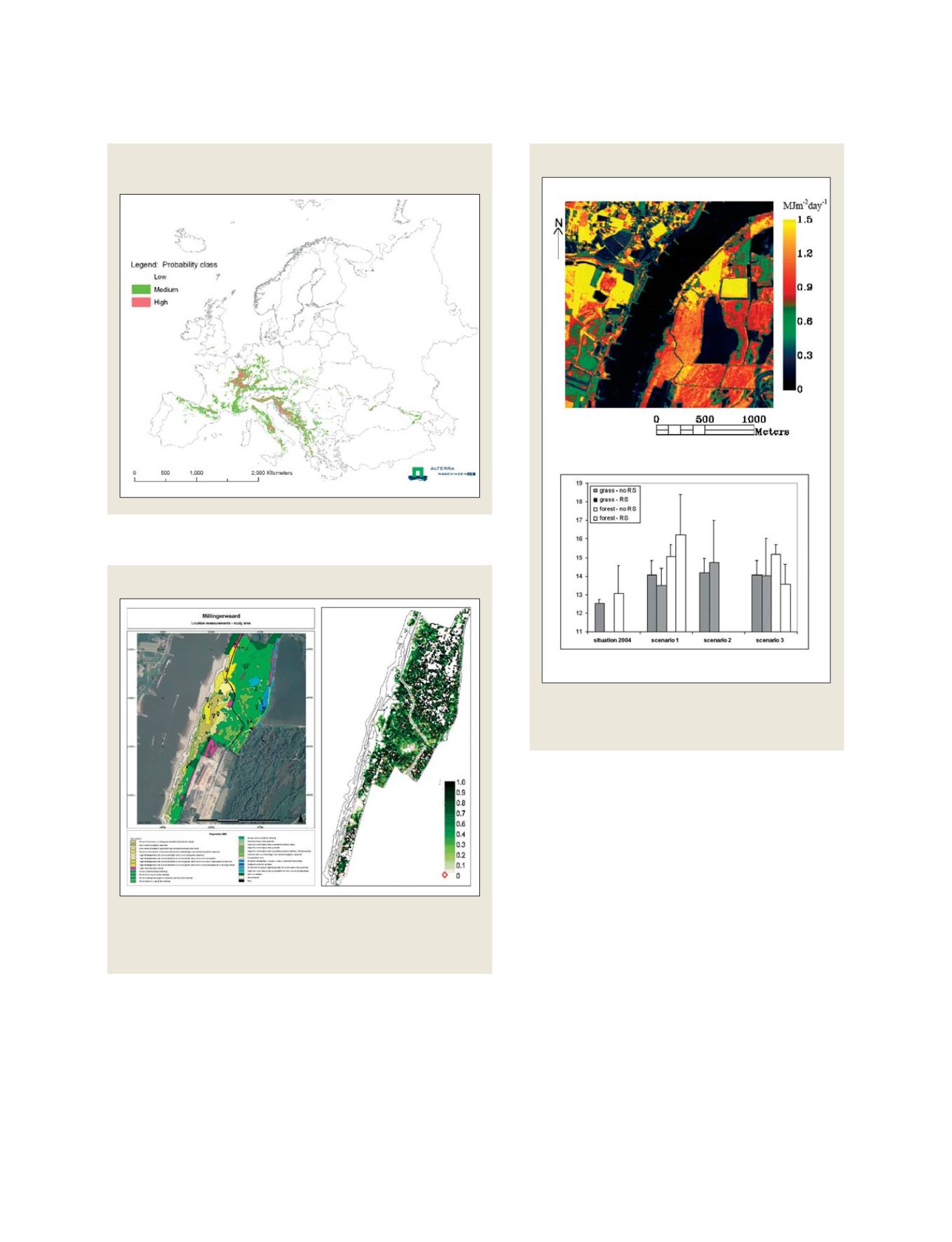

diversity) model combination, which supports the assessment of biodi-
versity at regional scales (Kooistra et al., 2007).
8
Conclusions
Increasingly, Earth observation data and products are used to assess
biodiversity from space. Since large-scale spectral, spatial and tempo-
ral high-resolution instruments have become available,
significant advances have been made in contributing to
the structured monitoring of biodiversity from space.
However, due to inherent observational limitations,
scaling gaps need to be bridged in all of the above
domains.
Disaggregation and reaggregation combined with
evidential reasoning at continental scale and radiative
transfer based inversion methods at regional scale, are
just two examples indicating the increasing applicability
of remote sensing in the structural assessment and moni-
toring of biodiversity. Sound forecasting methods of
biodiversity trends in the future will not only rely on the
above methods, but also increasingly include temporal
information and data assimilation based methods.
Infrastructure access such as defined in GEOSS in combi-
nation with structured biodiversity observation networks
will facilitate the operational monitoring and forecasting
with latest technology achievements and scientific
methods.
[
] 261
Spatial distribution of the habitat ‘Calcareous Beech Forest’
in various probability classes
Source: Mücher et al., 2005
Vegetation mapping data
Source: Karle Sykora, WUR
Mapping approaches compared
The results of two methods, classical vegetation sampling as well as the
spectral unmixing approach. The unmixed abundance of Rubus sp. corresponds
much more to the actual average impression of the test site, rather than the
effective floristic diversity, due to sparse spatial distribution of these species
Net Primary Productivity (NPP) estimates using advanced remote
sensing methods (top) and potential floristic diversity as predicted
by a combination of dynamic vegetation models (bottom)
Source: Schaepman, M.E., Wamelink, G.W.W., van Dobben, H., Gloor, M., Schaepman-
Strub, G., Kooistra, L., Clevers, J.G.P.W., Schmidt, A., & Berendse, F.
7
S
OCIETAL
B
ENEFIT
A
REAS
– B
IODIVERSITY
















